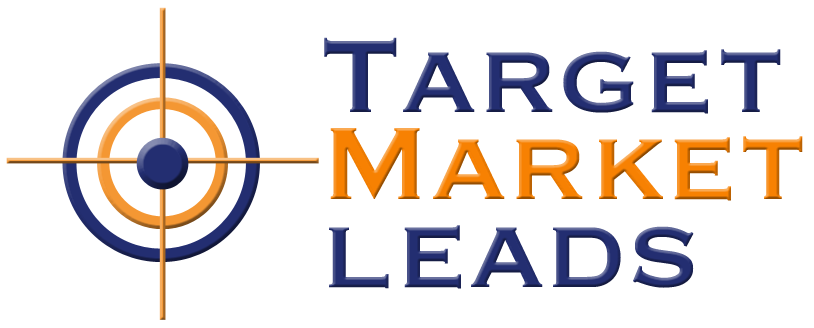10 Ways to Increase Sales With Demand Generation
A big challenge that B2B companies face is that their marketing and sales happen in silos. You can have the best marketing and sales talent in the business.
But if the messaging, processes, goals, and data between both sides don’t match, it is only natural and logical for business sales to plummet.
Most B2B businesses fail to capitalize on sales expansion opportunities because of this approach. This, in fact, is a typical situation where the left hand does not know what the right hand is doing!
In a business where sales and marketing are misaligned, the cost the company is estimated to be 10 percent of revenue or more each year. That’s not a percentage number a VP of sales or a CMO of any business can afford to ignore.
This is why B2B businesses need to get ahead with their demand generation strategies. In 2018, 70% of marketers said that demand generation budgets will go up by 34% while spending will witness a 20% rise.
This just goes to show how important it is for B2B businesses to implement a demand generation strategy if they want to drive customer attention and interest in their company. If you have their attention, then customer acquisition becomes all that easier.
What is Demand Generation?
 Demand Generation essentially converts a great idea into a sustainable business opportunity by bridging the gap between marketing and sales leading to effective lead generation with the ultimate goal of client acquisition.
Demand Generation essentially converts a great idea into a sustainable business opportunity by bridging the gap between marketing and sales leading to effective lead generation with the ultimate goal of client acquisition.
In other words, demand generation is the sum total of all interactions potential sales leads have with your B2B brand.
But demand generation does not stop with just customer acquisition – it encompasses brand interactions and experiences long after a sale lead has become your customer.
So, demand generation not only focuses on converting potential sales lead, but it also focuses on acquiring sales leads who can offer lifetime value and can become brand ambassadors for your business.
The only way you can nail your demand generation is by first locking down on a process with effective B2B demand generation strategies.
Plan Your Demand Generation Strategy
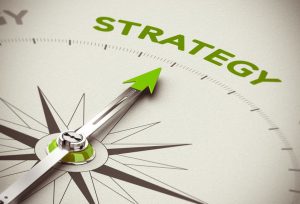 The aim of a robust demand generation strategy is to build customer interest in the business’s product or service and to get customers to move from the starting point to the desired destination.
The aim of a robust demand generation strategy is to build customer interest in the business’s product or service and to get customers to move from the starting point to the desired destination.
This movement happens in stages. At each stage, you need to make sure your sales lead is being guided by the right kind of information which enables them to proactively move to the next step in the buying process.
In order to do this, you need to follow a dedicated plan that entails the following three critical steps.
Related Article – 15 Bring more innovation to your demand generation now with Jeanne Hopkins, CMO Lola.com
Create a Need for Your Product or Service
A substantial portion of your marketing focus will be to educate and inform your target audience base about how your product or service will solve a critical problem or address a pressing need.
In other words, you need to focus on creating a space for your product. The way to do this is by:
- First, communicating to your target customers that there is an acute need for your product or service.
- Second, by educating them on how your product or service can address this need thereby creating a demand for your product across your target market.
Build Awareness for Your Brand
Creating brand awareness is a critical aspect and goal of any demand generation program. Given how competitive the market space has become today unless your brand stands out, customers will move on quickly to a brand with better overall awareness.
Which is why it is necessary to position your brand in front of target audiences not just at the point of purchase, but all through their buying journey. Remember, customers, are more likely to buy from you if they remember your brand.
Why should Customers Choose you over Other Solutions?
You cannot stop once you have created a need for your product and built awareness for your brand.
An important aspect of demand generation is to constantly communicate to your target audience why they should choose your product or service over your competitors – even after they have become customers.
How do you do this? You can focus on creating content and providing resources to target audiences that provide a more robust understanding of your brand and your solution and by highlighting specific details that make your solution stand out.
10 Proven Strategies for Growing Sales With Demand Generation
Business today employ multiple strategies for increasing the demand for their product or service. However, marketing is not stagnant – marketing goals and priorities keep evolving as do your customers.
Your motivations for connecting with your first customers will probably be very different from what motivates you to connect with customers say after a year.
Keeping your sales going and capitalizing on new opportunities is a challenge in a constantly evolving market space. Which is why we have put together the top ten demand generation strategies that can help you drive sales and expand your business presence.
1. Identify Your Customer(s)
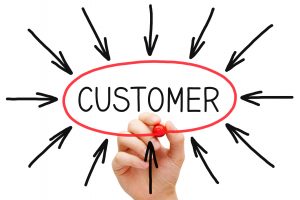 Before you start planning your sales and marketing strategies, it is important to first identify your customers.
Before you start planning your sales and marketing strategies, it is important to first identify your customers.
If you don’t know your audience and if you don’t understand their expectations or needs, how can you plan your messaging? In order to create demand for your product or service, it is important to first identify who you will be selling to.
An understanding of your target audience base and how to connect and communicate with different buyer personas will make it easier to for you to follow a targeted approach. Research and analyze your intended market space and find out as much information you can about your potential customers.
Information on their preferences, their buying and spending habits, and what influences their buying decisions can help you plan your marketing and sales messaging.
You can then use this data to connect with potential customers and build a conversation on the problem or issue that you want to provide a solution for.
Or you can generate more buzz around an issue or problem so customers become acutely aware of the need for a solution – a solution that you can provide.
2. Brand Identity and Building Brand Awareness
In any organization, the priority of a CMO is to strengthen brand identity and build strong visibility for the brand.
This is necessary because brand identity and building brand awareness are the core constructs of a robust demand generation strategy. And unless you have a clearly defined brand identity, you cannot generate customer interest around your product or service.
91% of consumers are more likely to buy from an authentic brand as opposed to buying from a dishonest brand.
When crafting your brand identity keep the following two questions in mind:
- What does your brand represent and what story do you want your brand to tell?
- Why should potential sales leads connect with your brand and buy from you?
You need to answer these questions if you want to come up with a unique and compelling brand identity and messaging process.
3. Implement the Right Set of Tools and Technology Solutions
 An effective demand generation strategy is supported on a foundation of the right set of tools and technology solutions that will optimize your marketing and sales. These include the following:
An effective demand generation strategy is supported on a foundation of the right set of tools and technology solutions that will optimize your marketing and sales. These include the following:
- Robust marketing automation solution.
- Customer relationship management (CRM) solution.
- Business intelligence solution.
- Customer service tool.
- Content management solution.
- Conversational marketing system.
These tools can become the lifeblood for your marketing and sales teams. Not only do they help align both sales and marketing, but these tools and systems can help remove a number of bottlenecks and bring more clarity to your brand messaging and drive sales.
4. Create Quality and Highly Relevant Content and Share it in All The Right Places
The reason why it is so important to understand your different buyer personas is so that you can go ahead and create messages that are uniquely relevant to their needs and expectations.
Good quality content requires a strong content strategy and messaging system. When you sit down to plan your content, carefully consider issues, problems, and what appeals to your personas.
Think about the kind of questions they are most likely to raise pertaining to those challenges and issues and then craft your content around those specific issues and questions.
As much as it is important to create the right kind of content, you also need to ensure that your content is visible in all the right places. By the right places we mean your website, company blog, and social sites.
Once your content is up, you need to make sure that your intended audience views it – you can use several tools such as paid search, guest posting, and social media posts among others as a means of garnering more visibility for your content.
5. Connect Prospects to Your Content via Conversion Paths
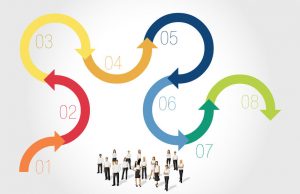 80% of B2B content marketing assets require user registration for access – in other words, they are gated.
80% of B2B content marketing assets require user registration for access – in other words, they are gated.
If you are creating quality content, great. But how do you generate leads from all that content? Simple answer – create conversion paths via gated content.
So, the next time sales leads want to access quality and highly relevant content such as white papers, eBooks, or podcasts and webinars, they will need to part with valuable information such as their email id, title, industry, and possibly other contact information.
You can include effective CTAs for conversion or to get them to interact with your content in the desired way.
You can also focus on website architecture to align with different buyer-personas and drive them to content that is most relevant to their needs.
In addition, segment your traffic by embedding forms on your landing page. This way you can collect relevant user information that can be used for prospecting or to gain a better understanding of potential sales leads which in turn can help you improve on your messaging.
6. Use Stage-Based Marketing
Although account-based marketing (ABM), has really picked up speed among B2B companies, it is still important for businesses to focus on stage-based marketing.
B2B buyers expect companies to provide relevant and customized information at each stage of their research.
Keep in mind that buyer expectations and preferences can differ – a flexible and proactive demand generation strategy address this requirement by catering to buyer preferences. So, your priority should be on how to provide the most relevant and appropriate content at each stage of the sales cycle.
If you are unable to meet buyer needs, moving your leads to the next stage within your sales path is going to be next to impossible.
On the other hand, if you have an understanding of your sales lead’s point of view, you will be in a much better position to predict and subsequently cater to the needs of prospects at different stages of demand throughout their buying journey.
This ties in with the first strategy listed above of identifying and understanding your customer.
7. Executing an Effective Campaign
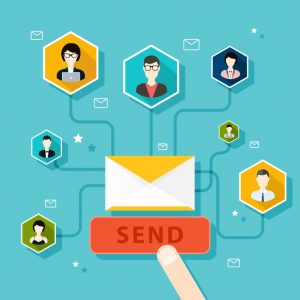 You have the machinery, you have the content, and your campaign is ready. You hit “go.” Except your campaign is unable to generate the traction you were expecting. What went wrong?
You have the machinery, you have the content, and your campaign is ready. You hit “go.” Except your campaign is unable to generate the traction you were expecting. What went wrong?
In the crazy world of marketing campaigns and advertising, creativity is that one variable which can swing results in your favor. Keep in mind that your buyers are bombarded with marketing and advertising material.
Your competitors are going to use everything in their arsenal to attract and convert sales leads. The only way to counter their efforts is by constantly coming up with new and unique ways of engaging with buyers.
You just need that one “lever” to get your prospect to move in your desired direction. If you understand your sales leads, then you can pepper your content, your marketing messages, and your campaigns with information that appeals to your buyers.
8. Partner Marketing can help Expand your Target Audience Base
The approach in partner marketing is to co-create content with like-minded business partners or companies, who are not competing for the same market space as your product or service.
This way you can gain access to their audience base, and they can appeal to your audience base – thus, both parties can effectively widen their audience base.
Joint webinars are a great example of partner marketing. Not only can you connect with new prospects, but more importantly, you don’t have to worry about losing your current audience base.
9. Sales Follow-up
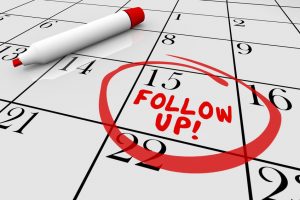 Everyone from the CMO to the last person in the marketing team works really hard to constantly improve marketing and attract potential sales leads. But a common mistake made by most marketing teams is that once they pass on the leads to sales, they don’t look back.
Everyone from the CMO to the last person in the marketing team works really hard to constantly improve marketing and attract potential sales leads. But a common mistake made by most marketing teams is that once they pass on the leads to sales, they don’t look back.
An effective demand generation strategy, however, requires that sales follow-up is tracked by both marketing and sales teams.
What kind of sales-follow-up is being done, is there a need for tweaking messaging, or does the sales rep or sale development rep need more information to successfully convert the lead?
It is necessary that both marketing and sales align closely, exchange feedback, and strategize through every stage of the sales pipeline.
Related Article – Improve Sales Lead Follow-up
10. Analyze and Measure the Success of Your Demand Generation Strategy
It’s vital to measure the successes of your demand generation strategy so you know which marketing initiative is working and what needs to be ditched.
You should be able to filter out initiatives that are causing leaks in your marketing and sales processes and replace or tweak your strategies for the next campaign.
The most important task is to identify the problem area – it could be an issue with your messaging, or the sales follow-up needs to faster, or maybe your prospecting process needs a revamp. If you know where the problem lies, you can go back and fix it.
Key Points
Implementing an effective demand generation strategy takes time and is often marked with multiple course corrections.
Remember, demand generation for any business is about gaining a comprehensive view of potential prospects well in advance. It is about aligning sales and marketing efforts in a bid to attract sales leads who are the right fit for the business
And while there are no fixed strategies for building an effective demand generation program, the above-mentioned ten strategies can help your business boost sales and drive business expansion.
Ready to sell smarter?
SalesPro Leads offers industry leading B2B Lead Generation and Appointment Setting services that provide sales intelligence to super-charge your sales team.
July 17, 20193:01 am
